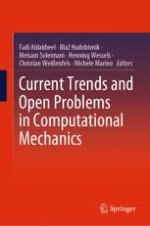2022 | OriginalPaper | Buchkapitel
Space–Time Flow Computation with Contact Between the Moving Solid Surfaces
verfasst von : Kenji Takizawa, Takuya Terahara, Tayfun E. Tezduyar
Erschienen in: Current Trends and Open Problems in Computational Mechanics
Aktivieren Sie unsere intelligente Suche, um passende Fachinhalte oder Patente zu finden.
Wählen Sie Textabschnitte aus um mit Künstlicher Intelligenz passenden Patente zu finden. powered by
Markieren Sie Textabschnitte, um KI-gestützt weitere passende Inhalte zu finden. powered by
